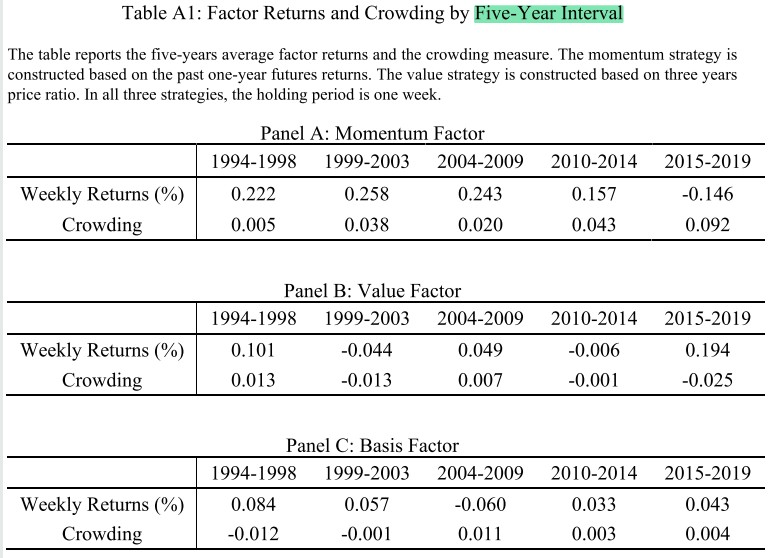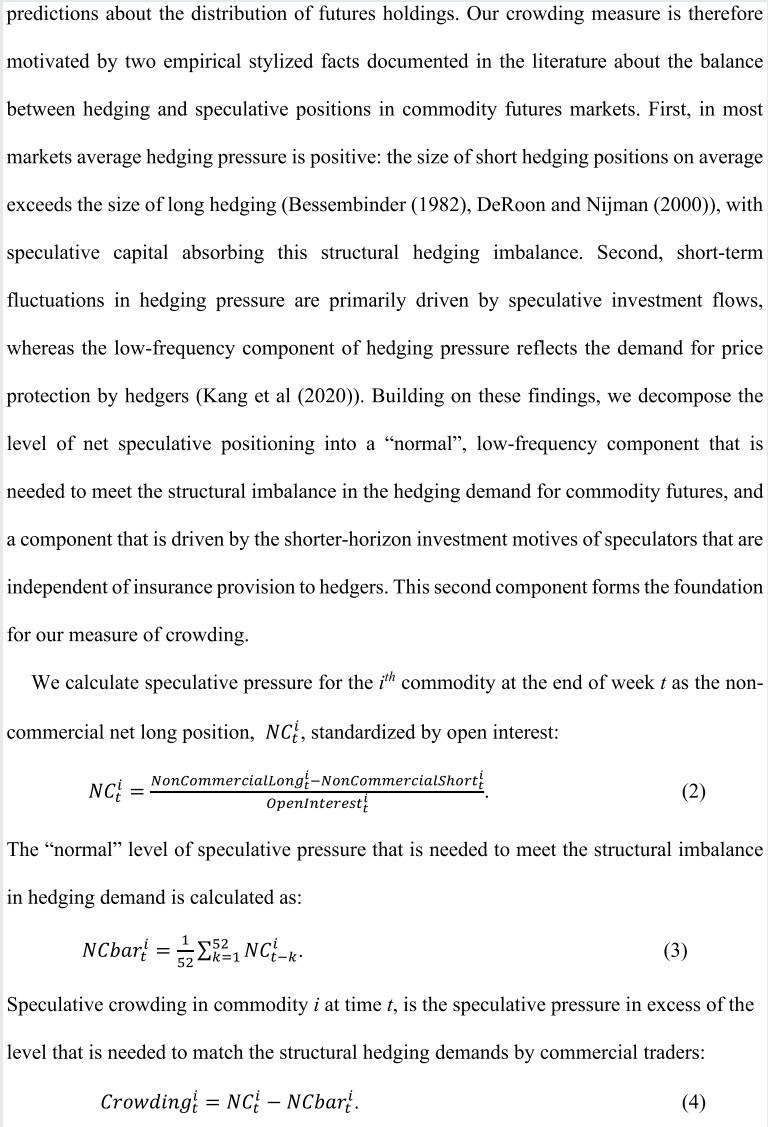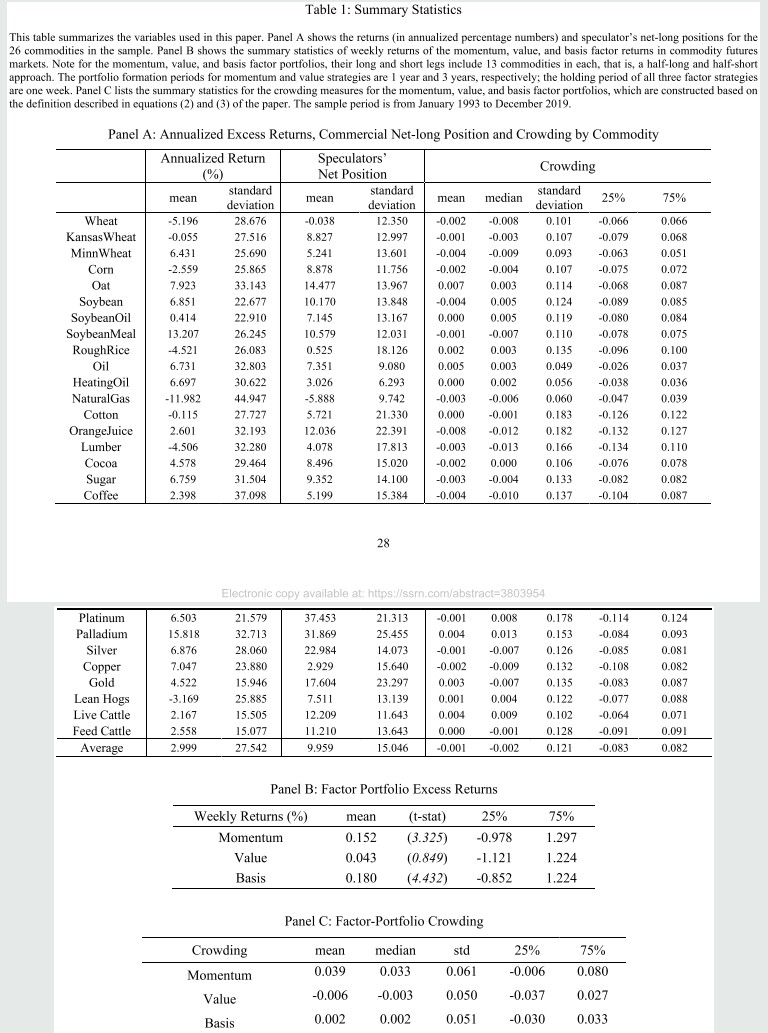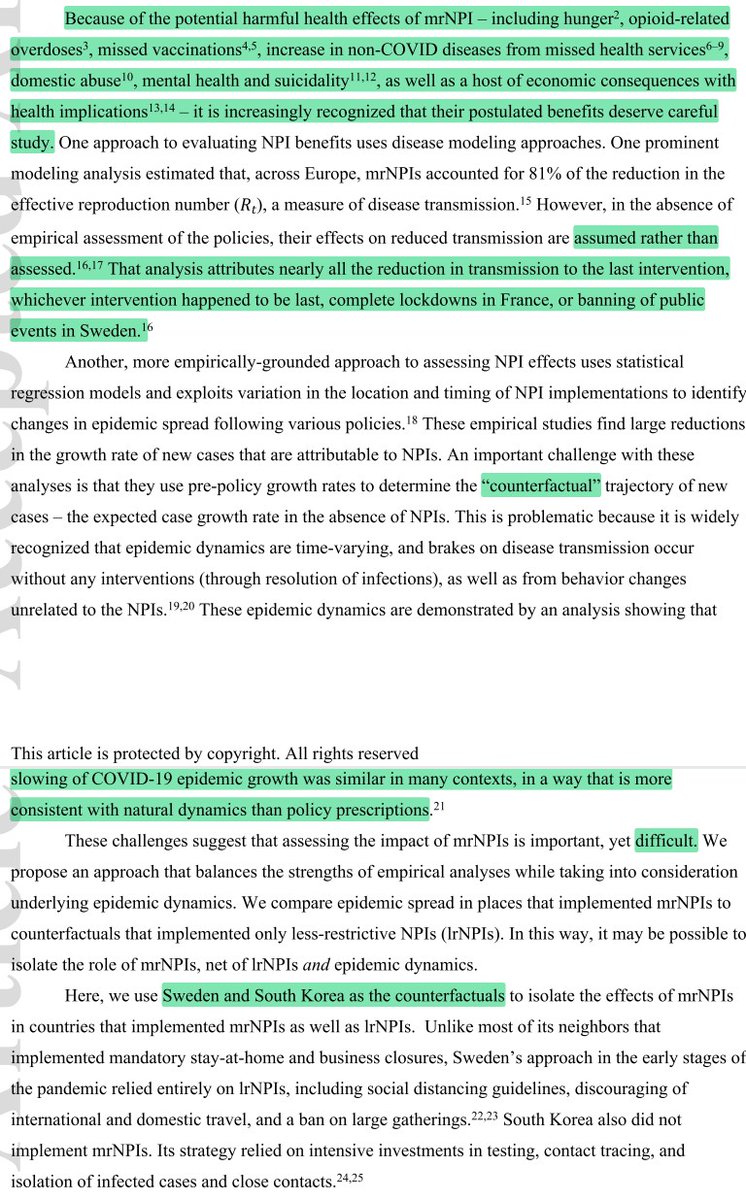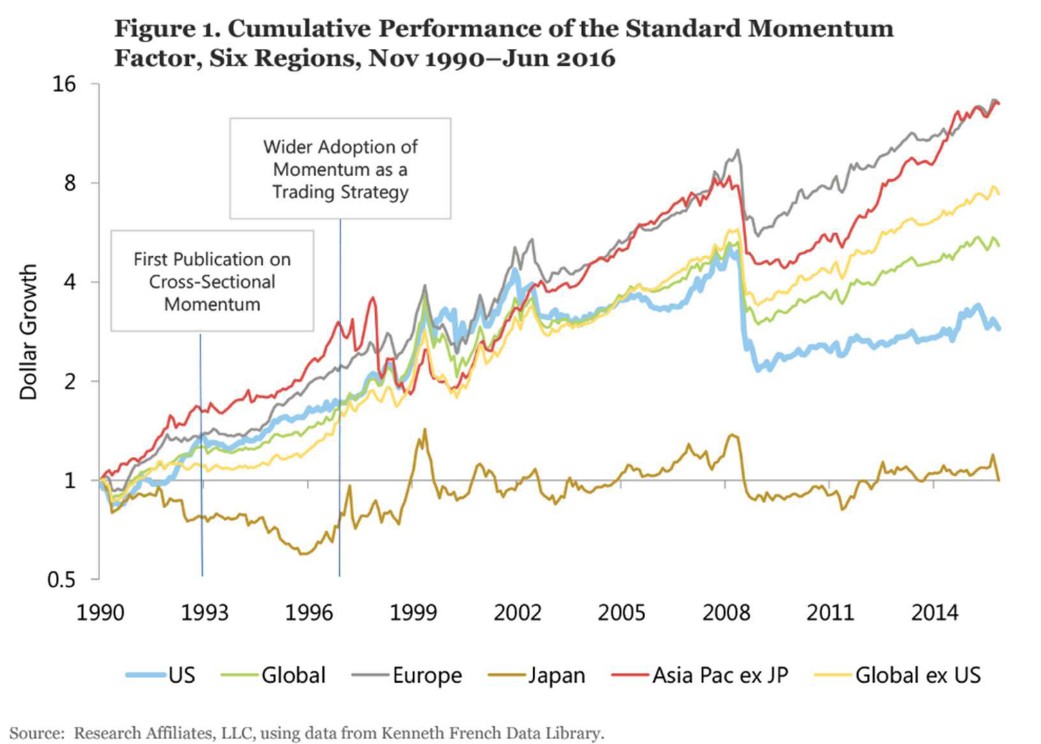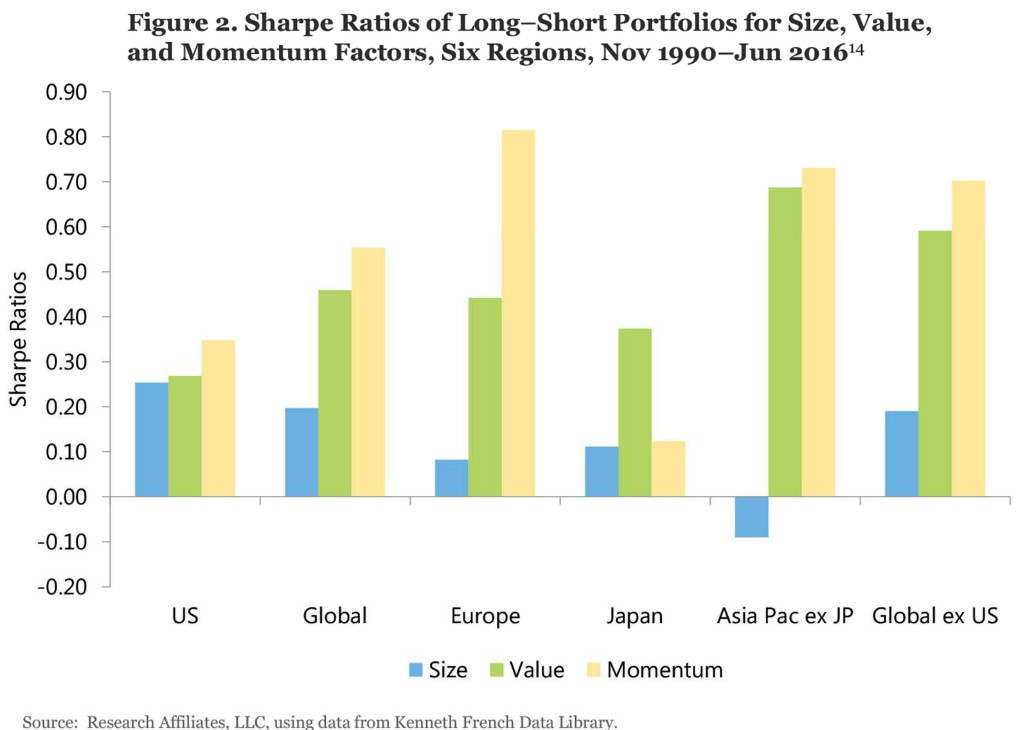
1/ After (Bruce Greyson)
"Near-death experiences are not a new phenomenon. There are accounts from ancient Greek/Roman sources, all the major religious traditions, indigenous populations worldwide, and medical literature of the 19th/20th centuries." (p.9)
amazon.com/After-Doctor-E…
"Near-death experiences are not a new phenomenon. There are accounts from ancient Greek/Roman sources, all the major religious traditions, indigenous populations worldwide, and medical literature of the 19th/20th centuries." (p.9)
amazon.com/After-Doctor-E…
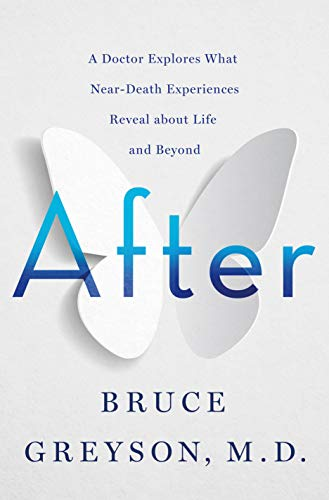
2/ This is the author's Wikipedia page:
"Greyson is Professor Emeritus of Psychiatry and Neurobehavioral Sciences at the University of Virginia and a Professor of Psychiatric Medicine in the Department of Psychiatric Medicine at UVA."
en.wikipedia.org/wiki/Bruce_Gre…
"Greyson is Professor Emeritus of Psychiatry and Neurobehavioral Sciences at the University of Virginia and a Professor of Psychiatric Medicine in the Department of Psychiatric Medicine at UVA."
en.wikipedia.org/wiki/Bruce_Gre…
3/ "Nothing in my background or scientific training had prepared me to deal with such a frontal assault on my worldview. I had been raised by a no-nonsense skeptical father, for whom life was chemistry, and I followed his lead in forging my own career as a mainstream scientist.
4/ "As an academic psychiatrist, I have published more than a hundred scholarly articles in peer-reviewed medical journals. I have been fortunate enough to serve on the full-time medical school faculty at the University of Michigan, where I ran the emergency psychiatry service...
5/ "at the University of Connecticut, and at the University of Virginia. Being in the right place at the right time has enabled me to receive research grants from government agencies, from pharmaceutical companies, and from private, nonprofit research foundations.
6/ "I have served on grant review boards and program planning workshops at NIH and have addressed a symposium on consciousness at the UN. I have earned awards for medical research and been elected a Distinguished Life Fellow of the American Psychiatric Association." (p. 8)
7/ "All of my peer-reviewed journal articles can be downloaded from the University of Virginia Division of Perceptual Studies website at uvadops.org.
"Decades of research have convinced me that near-death experiences are quite real and quite profound in their impact.
"Decades of research have convinced me that near-death experiences are quite real and quite profound in their impact.
8/ "I think there is evidence to take seriously both a physiological mechanism for NDEs and continued functioning of the mind independent of the brain.
"I hope to show that science and spirituality are compatible; being spiritual doesn’t require you to abandon science." (p. 12)
"I hope to show that science and spirituality are compatible; being spiritual doesn’t require you to abandon science." (p. 12)
9/ "Pretending something didn’t happen just because we can’t explain it is the exact opposite of science." (p. 12)
"Respecting things that are difficult to measure, rather than dismissing them as unreal, is not rejecting science. It’s embracing science.
"Respecting things that are difficult to measure, rather than dismissing them as unreal, is not rejecting science. It’s embracing science.
10/ "Science, by its very nature, is tentative. We have to be prepared to rethink our worldview if new evidence raises doubts.
"But studying things that don’t fit our preconceived ideas is what often drives breakthroughs in science." (p.19)
More on this:
"But studying things that don’t fit our preconceived ideas is what often drives breakthroughs in science." (p.19)
https://twitter.com/ReformedTrader/status/1331998734276653059
11/ "One of the near-death-experience (NDE) features I found most puzzling was the extreme clarity and speed of thought and sensation that most experiencers report. This is not what I would have expected of an experience that often occurs when the brain is deprived of oxygen.
12/ "This feature goes back to 1892, when Albert von St. Gallen Heim published the first large collection of NDEs.
"The extraordinary thinking and perceptive abilities while the brain is impaired are difficult to understand in terms of what we know about the brain." (p. 35)
"The extraordinary thinking and perceptive abilities while the brain is impaired are difficult to understand in terms of what we know about the brain." (p. 35)
13/ "10% of the patients whose hearts had stopped described NDEs, as well as 1% of the other patients, who had had heart attacks or other serious cardiac events without complete heart stoppage." (p. 46)
14/ "Many experiencers worry that other people, including researchers, won’t understand what happened to them. They fear they’ll be ridiculed if they talk about their NDE.
"It can be difficult for researchers to know if an experiencer is giving them the whole story." (p. 52)
"It can be difficult for researchers to know if an experiencer is giving them the whole story." (p. 52)
15/ "In order to properly compare observations, I developed the NDE Scale in the early 1980s, which has been used in hundreds of studies.
"Experiencers could rate each of sixteen features 0, 1, or 2 points, giving a total score between 0 and 32.
"Experiencers could rate each of sixteen features 0, 1, or 2 points, giving a total score between 0 and 32.
16/ "Twenty years later, I was challenged by two skeptical scholars I didn’t know (Lange and Houran). They had no previous interest in NDEs but were applying a complicated statistical test to scales that had been developed by other researchers—“debunking” some in the process.
17/ "I handed over all my data and the responses of hundreds of people who’d had NDEs.
"Their analysis ended up confirming the validity of the NDE Scale. It measured one consistent experience that was the same for men and women and for people of all ages, across many cultures.
"Their analysis ended up confirming the validity of the NDE Scale. It measured one consistent experience that was the same for men and women and for people of all ages, across many cultures.
18/ "NDE Scale scores were the same no matter how many years had passed since the experience. My Scale—and by extension NDEs themselves—had been given some credibility by a team of skeptics who not only had no stake in NDEs but would have been happy to discredit them." (p. 56)
19/ "In our 1979 JAMA article, we described features that were consistent across countries and societies. Some features run counter to cultural or religious beliefs. Experiencers almost universally become convinced by their NDEs that some part will live on after death." (p. 56)
20/ "Very few scientific research topics can be studied with controlled experiments. There are many fields that everyone accepts as science, even though laboratory experiments are difficult if not impossible—fields like astronomy, evolutionary biology, geology, and paleontology.
21/ "Of course, it wouldn’t make sense to take all anecdotes at face value without looking into them. Lkewise, it doesn’t make sense to reject all anecdotes without looking into them.
"It’s equally unscientific to accept them all or to reject them all without evaluation." (p.62)
"It’s equally unscientific to accept them all or to reject them all without evaluation." (p.62)
22/ On out-of-body experiences: "There have been two studies examining the accuracy of patients’ descriptions of their own resuscitations when their hearts had stopped, comparing the accounts of patients who experienced NDEs with those who didn’t.
23/ "Cardiologist Michael Sabom found experiencers described their resuscitations accurately, with very specific details of unexpected events. When he asked those who did not report NDEs to imagine their resuscitations, their descriptions were vague and contained many mistakes.
24/ "Sartori replicated this in a five-year study of hospitalized ICU patients. Patients who reported (did not report) leaving their bodies when their hearts stopped described their resuscitations accurately (made major mistakes describing the equipment/procedures used)." (p. 71)
25/ "Jan Holden reviewed 93 reports of out-of-body perceptions during NDEs. She found that 92% were completely accurate, 6% contained some error, and only 1% were completely erroneous. Any out-of-body perceptions being accurate should be enough to make us scratch our heads.
26/ “If you wish to upset the law that all crows are black, you mustn’t seek to show that no crows are; it is enough if you prove one single crow to be white.”
"The accuracy of out-of-body perceptions during NDEs makes it hard to dismiss near-death experiences as hallucinations.
"The accuracy of out-of-body perceptions during NDEs makes it hard to dismiss near-death experiences as hallucinations.
27/ "However, even when the reports are corroborated by independent witnesses—as when Al’s surgeon acknowledged “flapping his arms”—they are still anecdotal accounts reported after the event." (p. 72)
28/ TLDR: Attempts to do controlled experiments failed to replicate the earlier described results, possibly due to the way the experiments were set up. (p. 73) 



29/ "I compared the frequency of different psychiatric conditions among two groups of people in the general population: those who had reported NDEs and those who had come close to death but had not reported NDEs. I used the Psychiatric Diagnostic Screening Questionnaire...
30/ "to screen for the 16 most common disorders, including depression, anxiety, post-traumatic stress, obsessive thoughts/compulsive behavior, eating disorders, alcohol/drug abuse, physical symptoms caused by distress, and difficulty telling what’s real from what’s imaginary.
31/ "Each one of the 16 specific conditions occurred at the same rate in both groups. I also compared these rates with the rates of these mental illnesses in the general population as a whole and found no difference." (p. 79)
32/ "I gave a standard measure of dissociation, the Dissociative Experiences Scale, to a group of people in the general public who’d come close to death. Some of them had NDEs during the brush with death, and some didn’t.
33/ "Those who had NDEs did describe more features of dissociation but far fewer than the amount required for a psychiatric diagnosis of dissociation. The degree of dissociation shown by experiencers was typical of a general response to trauma but not typical of a mental illness.
34/ "In other words, the experiencers shifted their attention away from the physical body in crisis. That shifting of attention is a normal response to intolerable trauma.
"Using the Impact of Event Scale, I compared features of PTSD in those who had NDEs and those who didn’t.
"Using the Impact of Event Scale, I compared features of PTSD in those who had NDEs and those who didn’t.
35/ "I found that those who had NDEs also had more features of PTSD, but far fewer than required for a diagnosis of PTSD. Unlike people who have PTSD, those who had NDEs tended to have dreams and flashbacks of the brush with death but no attempts to avoid reminders of it.
36/ "That particular pattern—flashbacks of the event without avoidance of reminders—is typical of people struggling to understand an experience and fit it into their lives, but it is not typical of a mental disorder." (p. 81)
37/ "I turned to people seeking psychiatric treatment at my hospital’s outpatient clinic.
"Of more than 800 patients, one-third seeking psychiatric help said they had come close to death, and about 20% of those who’d come close to death also had NDEs.
"Of more than 800 patients, one-third seeking psychiatric help said they had come close to death, and about 20% of those who’d come close to death also had NDEs.
38/ "That’s about as often as NDEs occur among people in the general public who come close to death. In other words, the evidence suggests that people with mental illness have NDEs no more or less often than do people in the general population.
39/ "But among those who’d come close to death, those who’d had NDEs described less psychological distress than those who hadn’t had NDEs. The evidence suggested that NDEs may offer some protection against psychological distress after a close brush with death." (p. 81)
40/ "Psychiatrist Mitch Liester and I compared two groups of people who reported repeatedly hearing voices (people with schizophrenia and the small number of people who’d had NDEs and continued to hear voices after the experience).
41/ "Most in the NDE group found the voices were soothing/comforting, made them feel better about themselves, and had a positive impact on their relationships with others.
42/ "Most of the schizophrenics found the voices were distressing/threatening, made them feel worse about themselves, and had a negative impact on their relationships.
"Most who’d had NDEs wanted to keep hearing the voices, while almost none of the schizophrenics did." (p. 87)
"Most who’d had NDEs wanted to keep hearing the voices, while almost none of the schizophrenics did." (p. 87)
43/ "NDEs are triggered by life-threatening or otherwise extreme events. They are usually short-lived and happen only once, and they often happen to people who are leading normal, productive lives.
44/ "Mental illness, on the other hand, can happen without any obvious trigger, tends to go on for long periods or to recur again and again, and often happens to people with significant psychological difficulty or marginal social functioning.
45/ "NDEs are remembered vividly decades later, often as “realer than real,” retaining vividness and rich detail.
"People with mental illness usually realize later that their visions were unreal. The memories become less vivid/detailed until completely forgotten." (p. 86)
"People with mental illness usually realize later that their visions were unreal. The memories become less vivid/detailed until completely forgotten." (p. 86)
46/ "People who have had NDEs often reexamine their experience to seek and develop insight into its meaning. They often seek out other experiencers. If they’re disturbed, it’s usually only until they can figure out how to weave the experience and its lessons into their lives.
47/ "On the other hand, people with mental illness usually avoid any reminders of their unusual thoughts and perceptions and don’t seek to understand them. They generally don’t want to share their experiences, which they most often find permanently disturbing.
48/ "NDEs usually lead to an enhanced sense of meaning and purpose, increased joy in everyday things, decreased fear of death, and a greater sense of the interconnectedness among people. Experiencers often become and more altruistic and compassionate toward others.
49/ "People with mental illness may lose their sense of meaning in life and joy in daily activities, feel more fearful and isolated from other people, and become more absorbed in their own needs and concerns and less involved with others.
50/ "Mental illnesses often lead to negative outcomes, including difficulty maintaining jobs/relationships, legal complications, and harmful impulses.
"Of course, the distinctions between NDEs and mental illness are generalizations, and there will be exceptions." (p. 88)
"Of course, the distinctions between NDEs and mental illness are generalizations, and there will be exceptions." (p. 88)
51/ Mark Leary: “Science is not defined by the topics it studies but rather by its approach to investigation. Science can be used to address a wide array of questions, even about phenomena that ultimately turn out not to exist.
52/ ”In fact, one important function of science is to demonstrate empirically which effects are real and which are not, so it makes no sense to assert in advance that a study of a particular topic is not scientific because the hypothesis being tested is false!” (p. 90)
53/ "Most scientists thought reports of meteorites were tall tales not worth investigating until the 19th century, even though there were accounts going back to ancient times of rocks falling from the sky.
54/ "Scientists and physicians ridiculed the idea of germs until the 19th century, even though the ancient Greeks speculated about disease spreading from infected patients by “seeds of plague” invisible to the naked eye.
55/ "As recently as the 1980s, most medical scientists thought that looking for bacteria that might cause stomach ulcers was a waste of time—even though that idea is widely accepted today and earned Barry Marshall and Robin Warren the Nobel Prize in Medicine in 2005.
56/ "Each generation of scientists looks back on the models of previous generations with amusement at their naivete. Why then should we expect any of our current scientific views of how the brain works to stand up to the scrutiny of future generations?" (p. 90)
57/ Thomas Schofield: “Science is not about finding the truth at all, but about finding better ways of being wrong.… A theory can never be perfect: the best it can be is better than the theory that went before.” (p. 92)
58/ "Some NDE experiencers describe things that contradict their cultural and religious beliefs. Some were atheists who didn’t believe in anything after death—but who can’t deny their experience of somehow being conscious when their bodies were declared dead." (p. 91)
59/ "In 2002, I tracked down people I had interviewed in the early 1980s and asked them to describe their NDEs again.
"There were no differences between what the experiencers told me in the 1980s and what they told me later. This suggests memories of NDEs are reliable." (p. 94)
"There were no differences between what the experiencers told me in the 1980s and what they told me later. This suggests memories of NDEs are reliable." (p. 94)
60/ "I selected two dozen of Ian’s most complete cases from the 1960s & early 1970s. In each one, I rated the presence of the fifteen common features Raymond described. Then, I selected two dozen NDE accounts I had recently collected myself, matching each to one of Ian's cases...
61/ "by age, race, gender, religion, reason for coming close to death, how close they'd come to death. The features Raymond described were included as often in the accounts collected before his 1975 book, which spelled out what happens in NDEs, as they were in recent narratives.
62/ "The only exception was traveling through a tunnel (reported more often in the recent accounts). But I had left it out of my NDE Scale because other researchers had suggested that it was something we make up after the fact to explain how we get from one situation to another.
63/ "All of the NDE aftereffects were mentioned as often in narratives collected before Raymond wrote his book as they were in recent NDE accounts. So NDE accounts have not changed over time and do not appear simply to reflect familiar stories of what happens at death." (p. 94)
64/ "There are ways to distinguish whether memories are of real events or of fantasies. We used the Memory Characteristics Questionnaire (MCQ), a widely used scale that was designed to differentiate memories of real events from memories of fantasies or dreams.
65/ "The MCQ looks at aspects of memories that are reliably different in memories of real/imagined events, such as the clarity and detail, sensory aspects, memory for the context of the event, processing of thoughts when recalling the memory, and intensity of associated feelings.
66/ "I asked people who had come close to death to rate memories of three different experiences. The first was their close brush with death. The second was another real event that occurred around the same time. And the third was an imagined event, also from around the same time.
67/ "Memories of NDEs were like memories of real events but not imagined events.
"NDEs were remembered as more real than real events, just as real events were remembered as more real than imagined events: in detail, clarity, context, and intensity of feelings.
"NDEs were remembered as more real than real events, just as real events were remembered as more real than imagined events: in detail, clarity, context, and intensity of feelings.
68/ "For people who had come close to death but didn’t have an NDE, their memories of the event were not recalled as more real than other real events.
"Two other research teams, in Belgium and in Italy, came up with the same results.
"Two other research teams, in Belgium and in Italy, came up with the same results.
69/ "In addition, the Italian team also measured brain waves while experiencers were remembering their NDEs. They found that the experiencers’ brain waves were like those associated with recalling real events rather than recalling imagined events." (p. 97)
70/ "Beauregard found that there was no one part of the brain associated with NDE memories. Rather, several different parts of the brain became active." (p. 100)
"In contrast to patients with seizures, people who report NDEs almost always insist their experiences were real.
"In contrast to patients with seizures, people who report NDEs almost always insist their experiences were real.
71/ "They adamantly deny the possibility that their memories could be the result of their imaginations or a dream. They often look down on their unconscious bodies, and they remember the whole experience in sharp detail." (p. 104)
72/ "Kirsten, the only seizure patient in our study who recalled a clear out-of-body experience, had a defect in the midline of her brain. Although she claimed saw things accurately from another location, she reported no other NDE features and nothing that sounded uplifting.
73/ "Despite the common belief among some scientists that unusual electrical activity in the temporal lobe, like that caused by epileptic seizures or stimulation, can provoke experiences like NDEs or out-of-body experiences, we didn’t find that to be true.
74/ "Other researchers have reported that stimulating the temporal lobe with an electric current can produce a feeling of the body being distorted, even a sensation of leaving the body. But there are important differences between these sensations and out-of-body NDE experiences.
75/ "Perhaps the most crucial is that patients whose brains are being stimulated describe these sensations as unrealistic dreamlike events, not as things that are really happening, whereas people describe their NDEs as undeniably real events." (p. 107)
76/ "The medical literature suggest that at or near the point of death, there’s still enough electrical activity in the brain to produce an elaborate experience.
"Decades of research have established that brain activity decreases within 6 to 7 seconds of the heart stopping.
"Decades of research have established that brain activity decreases within 6 to 7 seconds of the heart stopping.
77/ "After 10-20 seconds, the EEG goes flat, indicating no activity in the cerebral cortex (responsible for thoughts, perceptions, memory, & language).
"Nelson suggests that REM brain activity, associated with dreams, can intrude into our waking thoughts in a near-death crisis.
"Nelson suggests that REM brain activity, associated with dreams, can intrude into our waking thoughts in a near-death crisis.
78/ "He did a study that he thought showed a high rate of REM intrusion symptoms in experiencers. However, the rate found in this study turned out to be no higher than the rate of the same REM intrusion symptoms in a random sample of the general public who didn’t have NDEs.
79/ "Another problem with this explanation is that many NDEs occur in people under general anesthesia, which suppresses REM brain activity. Furthermore, measurements of REM brain activity in people who’ve had NDEs show that it’s actually lower than in other people.
80/ "An Italian research team found that experiencers remembering their NDEs did not have brain wave patterns typical of recalling fantasies or dreams, but patterns typical of memories of real events. So it seems that NDEs are decidedly not like any dream." (p. 108)
81/ "Decreased oxygen is a very unpleasant experience, particularly for those who report perceptual distortions and hallucinations. The fear, agitation, and combativeness typical with decreased oxygen are very different from NDEs, which are usually peaceful, positive experiences.
82/ "Research that actually measured oxygen levels in people during medical crises consistently showed that NDEs are associated either with increased oxygen levels or with levels the same as those of non-experiencers. No study has ever shown decreased oxygen during NDEs." (p.108)
83/ "Patients who are given medications report fewer NDEs than do patients who don’t get any medication.
"We analyzed language usage and language structure in 625 accounts of NDEs and compared them to 15,000 accounts of unusual experiences of people taking any of 165 drugs.
"We analyzed language usage and language structure in 625 accounts of NDEs and compared them to 15,000 accounts of unusual experiences of people taking any of 165 drugs.
84/ "We found that the drug states most similar to NDEs were associated with ketamine. However, other common effects of ketamine don’t appear in NDEs, which suggests that NDEs are not simply an effect of the drug.
85/ "In a similar vein, Karl Jansen, the neuroscientist who has most fiercely promoted the ketamine model for NDEs, concluded after twelve years of research that he viewed ketamine as “just another door” to NDEs rather than actually producing them." (p. 109)
86/ "Associations between brain activity and mental function do not necessarily mean that the electrical activity in the brain causes thought or feeling. It's possible that thought causes electrical activity in the brain rather than the other way around." (p. 116)
87/ "When Penfield stimulated the part of the brain that made his patients’ arms and legs move, they didn’t think that they were moving their limbs. Instead, they reported that they felt as if Penfield was forcing their limbs to move—against their will.
88/ "Penfield summed this up at the end of his career: “When I have caused a conscious patient to move his hand by applying an electrode to the motor cortex of one hemisphere, I have often asked him about it. Invariably his response was: ‘I didn’t do that. You did.’
89/ "When I caused him to vocalize, he said: ‘I didn’t make that sound. You pulled it out of me.…’ There is no place in the cerebral cortex where electrical stimulation will cause a patient to believe or to decide.” " (p. 117)
90/ "As philosophy professor Alva Noë put it, “After decades of concerted effort on the part of neuroscientists, psychologists, and philosophers, only one proposition about how the brain makes us conscious—has emerged unchallenged: we don’t have a clue.”
91/ "Physicist Nick Herbert put the problem this way: “It is not that we possess bad or imperfect theories of human awareness; we have no theories at all. About all we know about consciousness is that it has something to do with the head rather than the foot.” " (p. 117)
92/ "The mind may work together with the brain rather than being produced by it.
"Alva Noë: “Instruments don’t make music. They enable people to make music. The idea that consciousness is a phenomenon of the brain is as fantastic as that of a self-playing orchestra.” " (p. 118)
"Alva Noë: “Instruments don’t make music. They enable people to make music. The idea that consciousness is a phenomenon of the brain is as fantastic as that of a self-playing orchestra.” " (p. 118)
93/ "How could you have vivid and even heightened feelings, thinking, and memory formation when your brain activity is largely gone? NDEs during cardiac arrest and deep anesthesia led me to seek some alternative to the idea that “the mind is what the brain does.” " (p. 119)
94/ "A survey of two thousand Belgian medical professionals found that the majority believed the mind and brain are two separate things.
"A recent survey of six hundred Brazilian psychiatrists found that the majority believed the mind was independent of the brain." (p. 123)
"A recent survey of six hundred Brazilian psychiatrists found that the majority believed the mind was independent of the brain." (p. 123)
95/ "Neuroscientists are working out possible biological mechanisms by which the brain could act as a filter, focusing primarily on the prefrontal cortex, which controls selective attention, and on electrical activity that is synchronized across different parts of the brain.
96/ "In “terminal lucidity,” someone who has had an irreversible brain disease, like Alzheimer’s, regains the ability to recognize family and carry on meaningful conversations and express appropriate emotions, for no apparent neurological reason.
97/ "This usually happens in the hours before the person dies, suggesting that the deteriorating brain has lost its ability to filter the mind, which is briefly free to express itself. Terminal lucidity is extremely rare, but the fact that it happens at all is a puzzle.
98/ "Recent neuroimaging studies of people under the influence of psychedelic drugs have shown that the elaborate mystical experiences associated with these drugs are accompanied by decreased brain activity. This is the exact opposite of what we had expected.
99/ "This decrease in brain activity might reduce the brain’s ability to filter the mind and permit access to mystical experiences. This is consistent with spiritual traditions that use choking, breath-holding, starvation, and sensory deprivation to induce mystical experiences.
100/ "This is consistent with the idea that the brain is a filter of our thoughts and feelings and that their range expands as the filtering activity of the brain decreases. As physician Larry Dossey put it, “We are conscious not because of the brain but in spite of it.” "(p.128)
101/ "Half of experiencers report meeting someone who has died.
"But sometimes they meet recently deceased people who were *not known to have died*.
"Might they meet some being in their NDEs and retroactively identify the being they met as that newly deceased loved one?
"But sometimes they meet recently deceased people who were *not known to have died*.
"Might they meet some being in their NDEs and retroactively identify the being they met as that newly deceased loved one?
102/ "That may happen in some NDEs, but in other cases, like Jack’s, the experiencer told other people about the vision, naming the deceased person, before learning of his or her death.
103/ "Could these be “lucky guesses”? Might experiencers envision meeting someone in their NDEs who was still living but likely to have died?
"If so, were there NDEs where experiencers “guessed wrong” and identified people in their NDEs as deceased who were really still alive?
"If so, were there NDEs where experiencers “guessed wrong” and identified people in their NDEs as deceased who were really still alive?
104/ "It turns out that there are a few NDEs in which experiencers report meeting people who are still alive. In our collection that now includes more than a thousand NDEs, 7% involved seeing someone in the realm of the NDE who was still living.
105/ "But in every one of those cases, the experiencer described that person as still living, in most of those cases pleading with the experiencer to come back. None of the NDEs in our collection involved an experiencer mistakenly thinking a person still alive had died." (p. 136)
106/ "90% of experiencers in my research reported feelings of peace. Almost three-fourths reported feelings of joy or bliss. Two-thirds described a heavenly sense of cosmic unity or being “one with everything.” Three-fourths reported an encounter with “a loving being of light.”
107/ "I was surprised when I first started studying people who have NDEs to find that most are not terrified and panicking as they face death. It is usually the opposite: most describe overwhelmingly positive feelings, ranging from incredible calmness to joy and ecstasy." (p.139)
108/ "Judy and Dottie both identified the “someplace else” they went as heaven. Most experiencers, however, are not able to put a label on where they went. Three-fourths of the experiencers in my research described entering some unfamiliar realm or dimension." (p. 140)
109/ "By the early 1990s, we had collected enough accounts of distressing NDEs to publish the first report of such experiences in a medical journal.
"Among our current sample, 86% said their NDE was primarily pleasant, 8% said it was unpleasant, and 6% said it was neither.
"Among our current sample, 86% said their NDE was primarily pleasant, 8% said it was unpleasant, and 6% said it was neither.
110/ "Although only a small minority of experiencers describe frightening or distressing experiences, it is possible that there are many more people who have unpleasant NDEs but are unwilling to talk about them." (p. 141)
111/ "Reluctance to face frightening NDEs may lead to long-lasting emotional trauma. Distressing NDEs are often interpreted as a message for experiencers to turn their lives around.
"Some experiencers describe a realm that sounds like traditional descriptions of hell." (p. 143)
"Some experiencers describe a realm that sounds like traditional descriptions of hell." (p. 143)
112/ "90% of experiencers say they encountered a godlike being; many regard this as the most meaning feature of their NDEs.
"One-third identified it as an entity consistent with their religious beliefs, while two-thirds said they could not identify the godlike being." (p. 154)
"One-third identified it as an entity consistent with their religious beliefs, while two-thirds said they could not identify the godlike being." (p. 154)
113/ "86% of experiencers said they had less fear of death since their NDEs. Even experiencers like John who don’t report visiting heaven or seeing God in their NDEs endorse the belief that there is no reason to fear death when it comes." (p. 164)
114/ "Patients who had attempted suicide indicated that one-fourth have an NDE during the attempt. Those who have NDEs are less suicidal afterward than attempters who don’t have NDEs. This appears paradoxical because NDEs generally lessen the fear of dying.
115/ "However, every study on the topic has reached the same conclusion: NDEs decrease thoughts of suicide.
"For most who have NDEs, losing fear of death means also losing fear of life—letting go of having to be in control, taking risks, & enjoying life to the fullest." (p. 168)
"For most who have NDEs, losing fear of death means also losing fear of life—letting go of having to be in control, taking risks, & enjoying life to the fullest." (p. 168)
116/ "As a psychiatrist, I knew well how hard it can be to help people make modest changes in their lives, often requiring weeks, months, or years of intensive work. And yet experiencers claimed their NDEs overhauled their lives in a matter of seconds.
117/ "90% said their attitudes and beliefs changed. Half said that the effects of their NDEs continued to increase over time. Two-thirds said they felt better about themselves and had an improved mood; three-fourths said they were calmer and more likely to help others." (p. 170)
118/ "Several researchers have found consistent changes in experiencers’ perception of self, relationship to others, and attitude toward life. This new sense of purpose or mission in life is often related to an experience of having been sent back to complete some work." (p. 172)
119/ "On the other hand, those who don’t have NDEs often become more anxious and depressed, withdraw from social activities, and have post-traumatic stress symptoms. They often respond to a close brush with death by becoming more cautious and less likely to take risks." (p. 172)
120/ "I started using the Life Changes Inventory in the early 1980s with people who had NDEs. Twenty years later, gave these same experiencers the inventory again.
"All of the changes from the inventory were virtually identical after the twenty-year lapse." (p. 172)
"All of the changes from the inventory were virtually identical after the twenty-year lapse." (p. 172)
121/ "Our studies and the research of others also found that people who have had NDEs report a heightened sense of purpose, increased empathy, awareness of the interconnectedness of all people, and a belief that all religions share certain core values.
122/ "NDEs often lead to a paradoxical decrease in devotion to any one religious tradition, despite a greater awareness of guidance by and connection to a higher power." (p. 177)
123/ "One-third of experiencers changed their occupations as a result of NDEs, and three-fourths reported a change in their lifestyle. They are most dramatic with experiencers who had been in a profession that involves violence, such as law enforcement or the military." (p. 187)
124/ "Many experiencers say that because they no longer feel driven to accumulate possessions, they paradoxically feel freer to enjoy material pleasures. They don’t renounce possessions but feel less attached to them. They no longer define themselves by what they own." (p. 190)
125/ "The idea that our minds are produced solely by our physical brains is not a scientific fact. It is a philosophical theory proposed to explain scientific observations. It is only one of many such theories—some of which may offer better explanations of thoughts and feelings.
126/ "I have become comfortable entertaining a variety of theories about the mind and the brain, using different models for different tasks.
"Neuroscientist Andy Newberg at the University of Pennsylvania measured blood flow in the brains of Franciscan nuns as they prayed.
"Neuroscientist Andy Newberg at the University of Pennsylvania measured blood flow in the brains of Franciscan nuns as they prayed.
127/ "He found increased activity in certain parts of the brain. When he showed these brain scans to his fellow neuroscientists, their response was purely physical: “So those are the parts of the brain that make them think they’re talking with God!”
128/ "When he showed the same scans to the nuns, their response combined the physical and nonphysical: “So those are the parts of the brain God uses to talk to me!”
"Physical and nonphysical descriptions of NDEs may both be right, but neither by itself is complete." (p. 209)
"Physical and nonphysical descriptions of NDEs may both be right, but neither by itself is complete." (p. 209)
129/ "Uncertainty and ambiguity no longer scare me because studying NDEs has made me more comfortable with not having all the answers." (p. 212)
130/ "NDEs are common. Most researchers estimate that 10%-20% of people who come close to death report NDEs (5% of the general population). Studies have failed to find a variable predicting who will have one. They happen to people of all ages, religions, & ethnic groups." (p.216)
• • •
Missing some Tweet in this thread? You can try to
force a refresh


